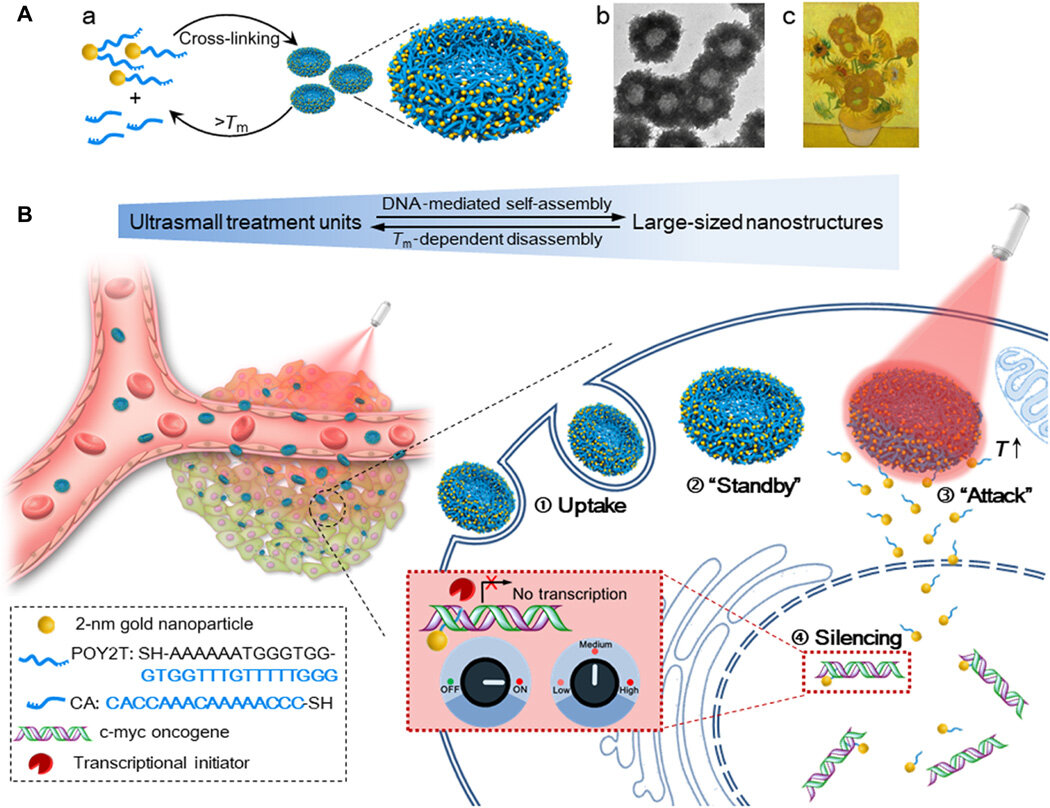Gold-DNA nanosunflowers for efficient gene silencing and controlled transformation
Date: 30.10.2019
Developing an efficient delivery system for enhanced and controlled gene interference-based therapeutics is an existing challenge in molecular biology. The advancing field of nanotechnology can provide an effective, cross-disciplinary strategy to facilitate nucleic acid delivery.
 In a new report, Shuaidong Huo and colleagues in the interdisciplinary departments of Nanoscience, Interactive Materials, Chemistry and Polymer Research in China, Germany and the U.S. used triplex-forming oligonucleotide sequences coupled to its complementary strand to mediate the self-assembly of ultra-small gold nanoparticles.
In a new report, Shuaidong Huo and colleagues in the interdisciplinary departments of Nanoscience, Interactive Materials, Chemistry and Polymer Research in China, Germany and the U.S. used triplex-forming oligonucleotide sequences coupled to its complementary strand to mediate the self-assembly of ultra-small gold nanoparticles.
The resulting sunflower-like nanostructures showed strong near infrared (NIR) absorption and ability for photothermal conversion. When the scientists irradiated the structures with NIR, the larger nanostructures disassembled to generate ultra-small nanoparticles modified with the c-Myc oncogene sequence to directly target the cancer cell nucleus.
Huo et al. controlled gene silencing by synergistically controlling the time of preincubating cells with nanoparticles alongside nanostructure self-assembly (in vitro and in vivo) and the time-frame of NIR irradiation.
The study provided a new paradigm to construct efficient and tailored nanocarriers for applications of gene interference and therapeutic gene delivery.























